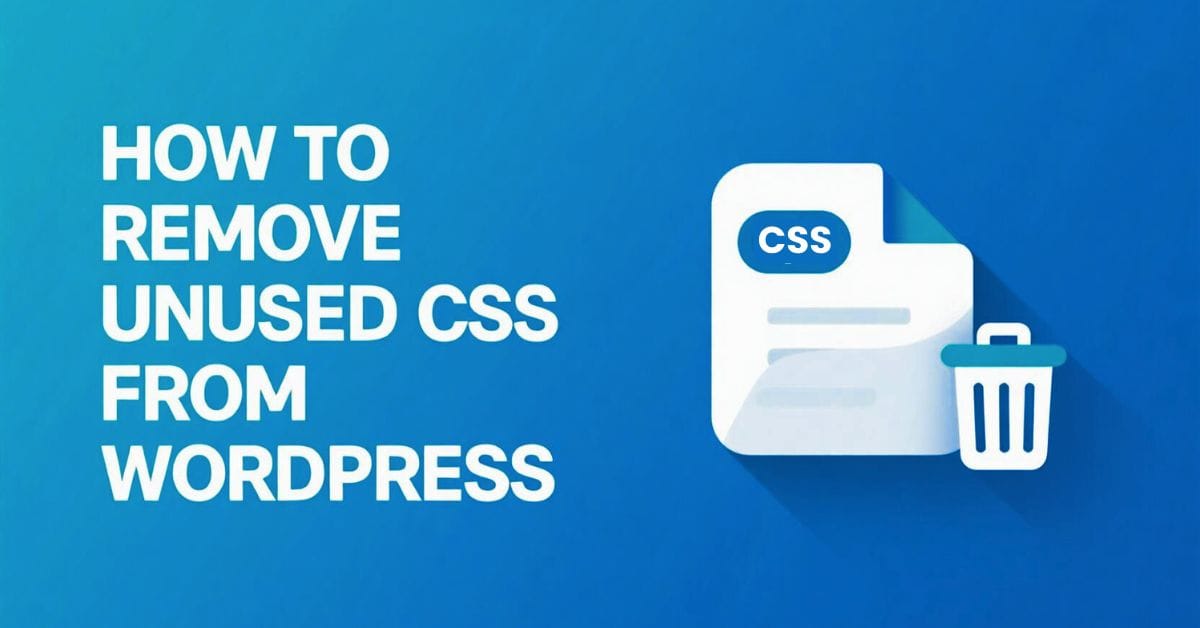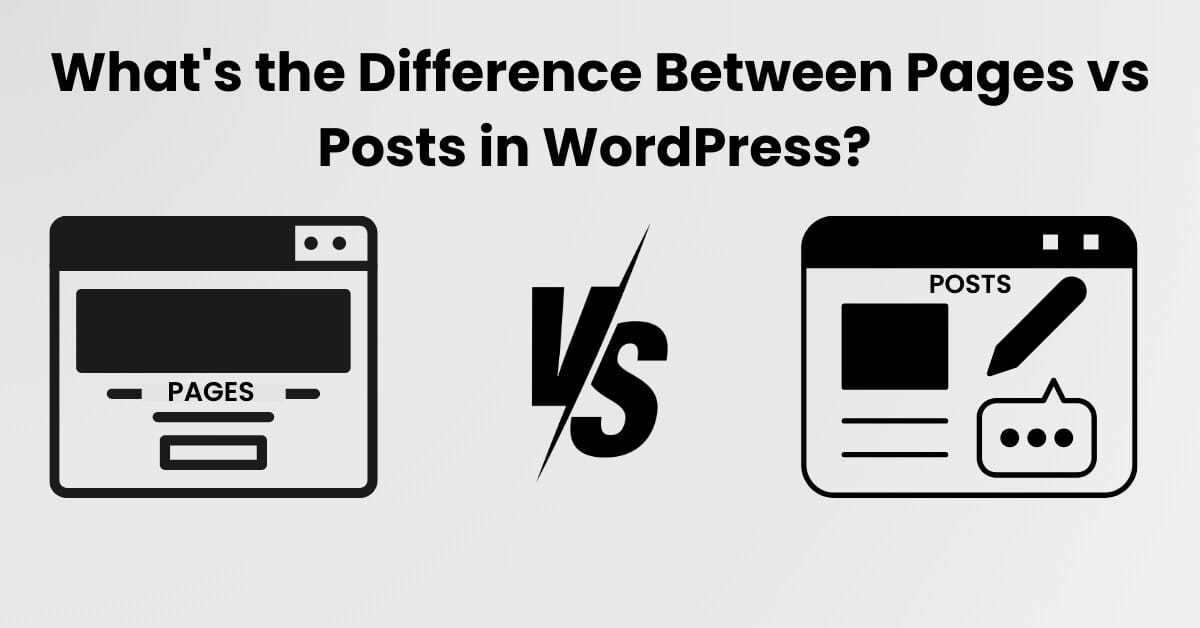Ever notice your WordPress site feeling a bit sluggish? A common reason is “unused CSS.” Think of it like this: your website loads a huge toolbox, but only uses a few tools for each job.
Unused CSS means your site downloads styling rules that aren’t needed for the page you’re viewing. These extra styles often come from your theme, plugins, or page builders.
This “load-all” method makes things easy for developers, but it can slow down your site.
In this post, we are going to remove that unused CSS from WordPress easily using free plugins.
Why There’s Unused CSS in WordPress
WordPress, with all its themes and plugins, tends to gather a lot of extra CSS. Each part you install often brings its stylesheets. It loads them even if you’re not using all its features on a particular page.
Big page builders like Elementor or Divi, and feature-rich themes, are often the main culprits. They can add a lot of CSS, but only a small part might be used on any given page
All this extra CSS means your browser downloads more data than it needs. This “bloat” makes your page load slower.
So, while plugins help remove unused CSS, a truly fast site also needs smart planning. All that extra CSS shows we need better ways to load only what’s necessary.
Benefits of Removing Unused CSS
Getting rid of unused CSS really helps your website’s speed and how visitors experience it. It directly fixes the “Reduce unused CSS” warning you might see in Google PageSpeed Insights. This is especially true if there’s more than 2KB of unused code.
This cleanup significantly boosts important scores like Largest Contentful Paint (LCP) and First Contentful Paint (FCP). It does this by removing CSS that blocks your content from showing up quickly.
First Contentful Paint (FCP) measures when the first bit of content appears. Largest Contentful Paint (LCP) measures when the biggest piece of content on your page becomes visible. Unused CSS can delay the loading of styles for this important element, increasing your LCP time.
Plus, it makes your overall page size smaller. You’ll also load fewer CSS files. This means faster loading and a smoother experience for your visitors.
Google’s search rules increasingly favor fast, user-friendly sites. So, optimizing CSS directly helps you rank higher and get more visitors.
Identifying Unused CSS on Your WordPress Site
Before you can effectively remove unused CSS from WordPress with a plugin, you need to find where all that extra code is hiding. Luckily, there are some great tools to help you pinpoint the problem.
Leveraging Browser Developer Tools
Google Chrome has a built-in “Coverage” tool in its Developer Tools. This tool shows you exactly how much CSS (and JavaScript) is used versus unused on any page.
To use it, open DevTools by pressing F12 or right-click on the page and select “Inspect”. Then, click on the three dots (⋮) with Console, and pick “Coverage.”
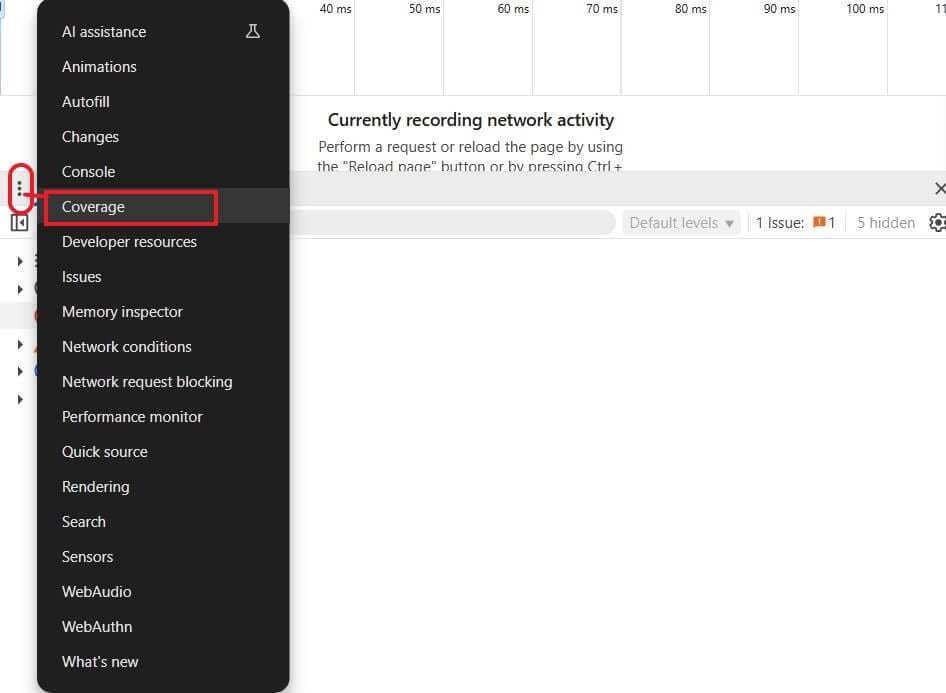
Click the ‘Start recording’ button, and Chrome will reload the page. It then tracks which styles are used as the page loads.
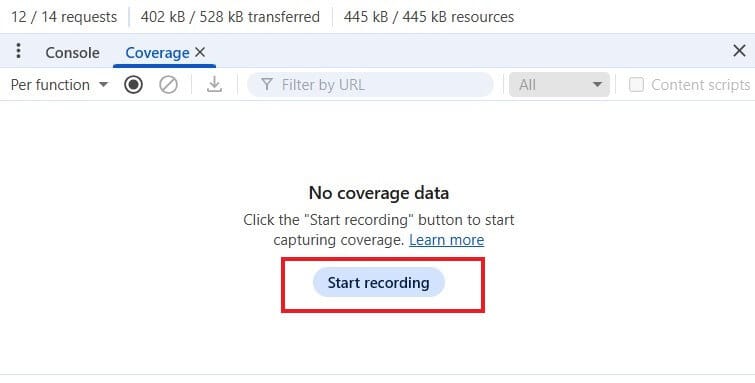
Browser DevTools give you a real-time, detailed look at your CSS. This is super helpful for advanced users. You can see which files are problematic, check if your CSS removal plugins are working, and fix any visual glitches. It makes a tricky process much clearer.
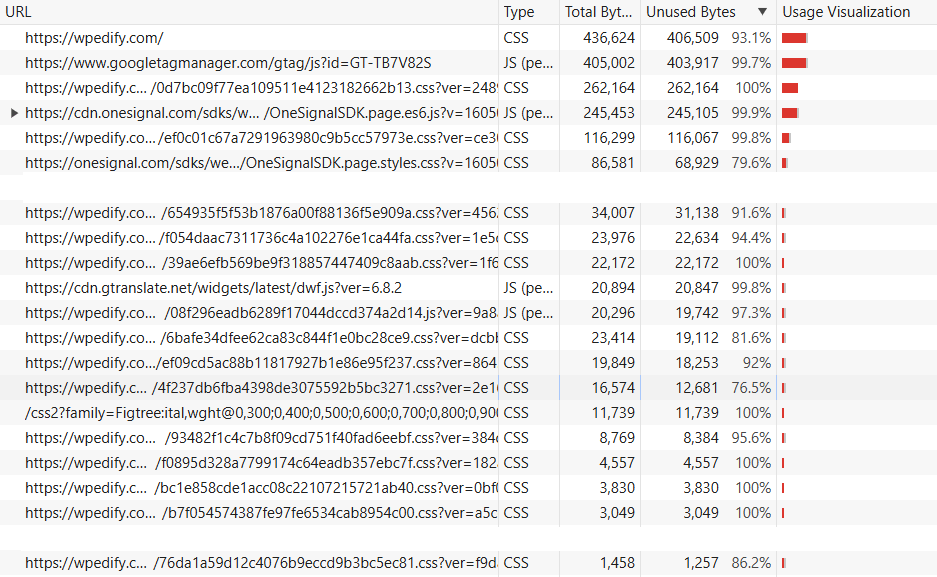
Using Online Analysis Tools
Online tools are an easy way to spot unused CSS. Unused-CSS is a free (with paid options) tool that quickly checks your page’s stylesheets.
It tells you the percentage with the file name of CSS that’s not being used. This gives you a quick idea of what you can save.
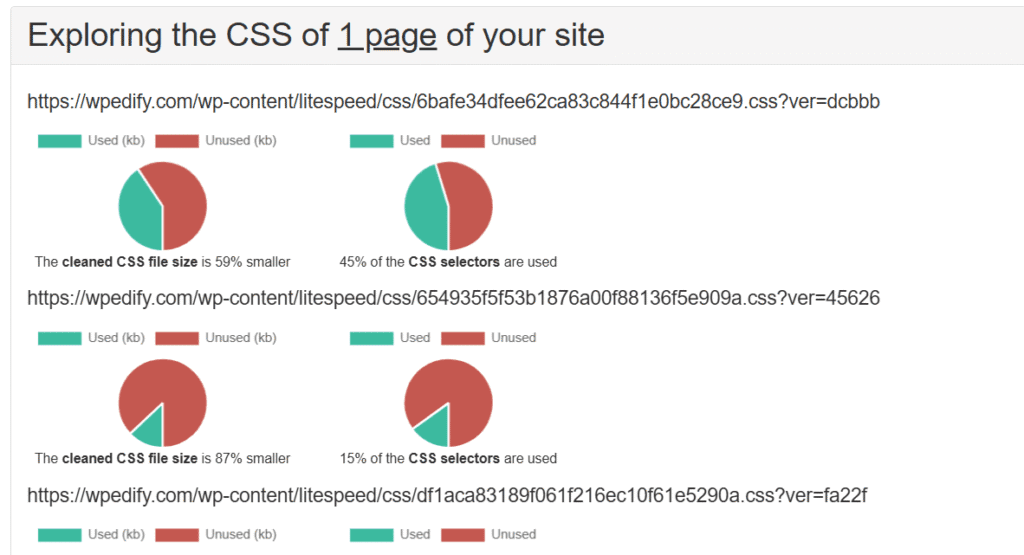
This makes CSS analysis simple for everyone, even if you’re not a tech expert. There are some more tools that remove unused CSS and return a file of critical CSS only.
PurifyCSS is the most popular tool to get a critical CSS file, but we don’t recommend using these. Instead, you should use the plugins.
Using Google PageSpeed Insights
Google’s PageSpeed Insights is the go-to tool for checking website performance. It will tell you to “Reduce unused CSS”(under DIAGNOSTICS tab).
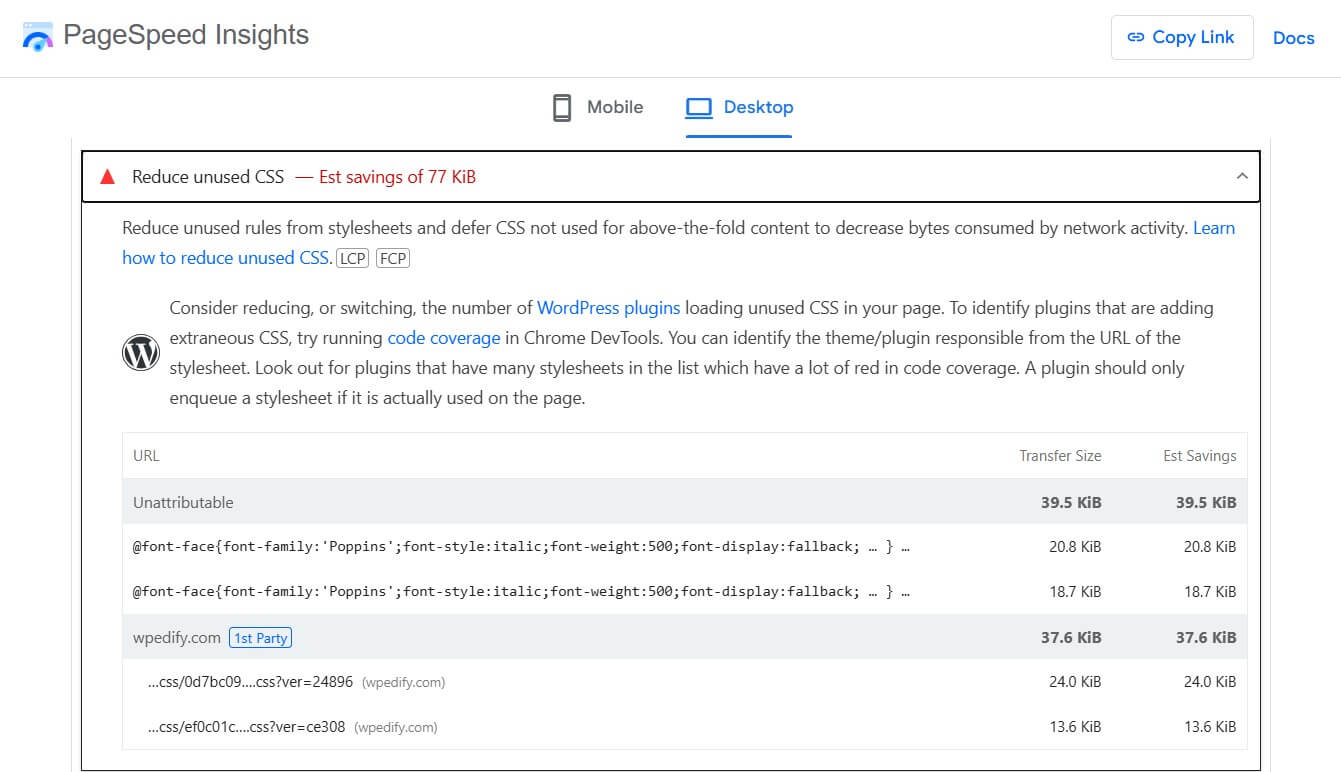
Unused CSS really hurts your Core Web Vitals (CWV) scores, which are key for user experience and SEO.
The strong link between unused CSS and Core Web Vitals shows something important that optimizing CSS isn’t just a small fix anymore. It’s a must-have for website speed, SEO, and a good user experience, directly affecting your search rankings.
Plugins to Remove Unused CSS from WordPress
Picking the best plugin to remove unused CSS from WordPress is a big step. Your choice depends on your needs, how comfortable you are with tech, and your hosting setup. It’s good to know what each popular option offers.
LiteSpeed Cache
LiteSpeed Cache (LSC) is a powerful, free, and feature-packed plugin. It’s especially good for websites hosted on LiteSpeed servers. It stands out because it works so well with the server technology.
You get an option similar to removing unused CSS in the LSC plugin. This plugin is recommended only if you want to use it for Cache also. If you are using any plugin already for cache, then go for the Asset Cleanup plugin to remove unused CSS.
To enable unused CSS removal. Navigate to LiteSpeed Cache → Page Optimization and open [1] CSS Settings tab and do this:
Turn ON CSS Combine, Generate UCSS and UCSS Inline.
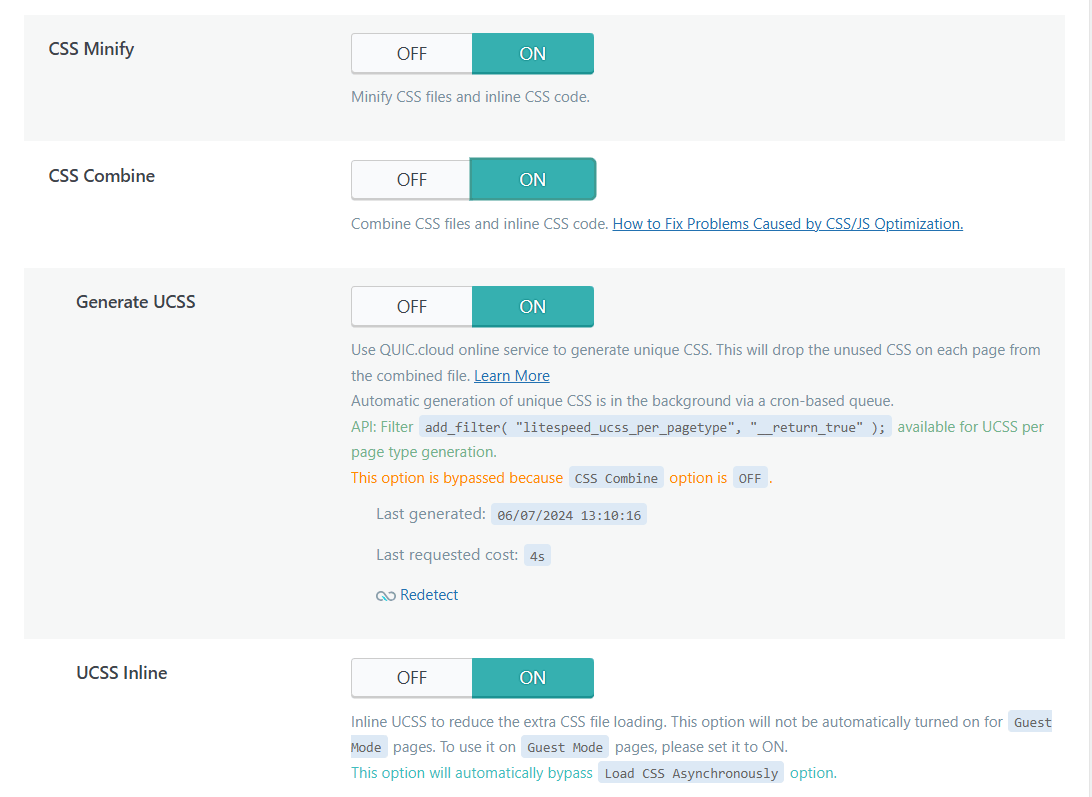
Here is a comparison of CSS loaded before and after applying the Litespeed plugin’s CSS removal method. (using coverage tool)
Before:

After:
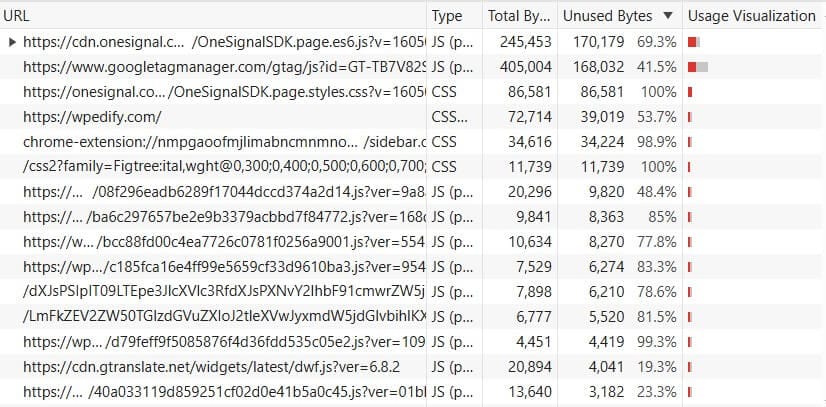
Please note that some funcionalities may break after applying this setting. Please read this article to prevent this→.
Asset CleanUp
Asset CleanUp is a very specialized plugin. It focuses only on managing and optimizing CSS and JavaScript files. It’s excellent at turning off unwanted files on a page-by-page basis.
Crucially, Asset CleanUp has an “Enable Test Mode” feature. This is a great feature if you are not sure how to configure it.
This will show the changes to only the logged-in users, so you don’t lose your live visitors.
To enable, navigate to Asset CleanUp → Settings → Test Mode. And toggle on Enable Test Mode?
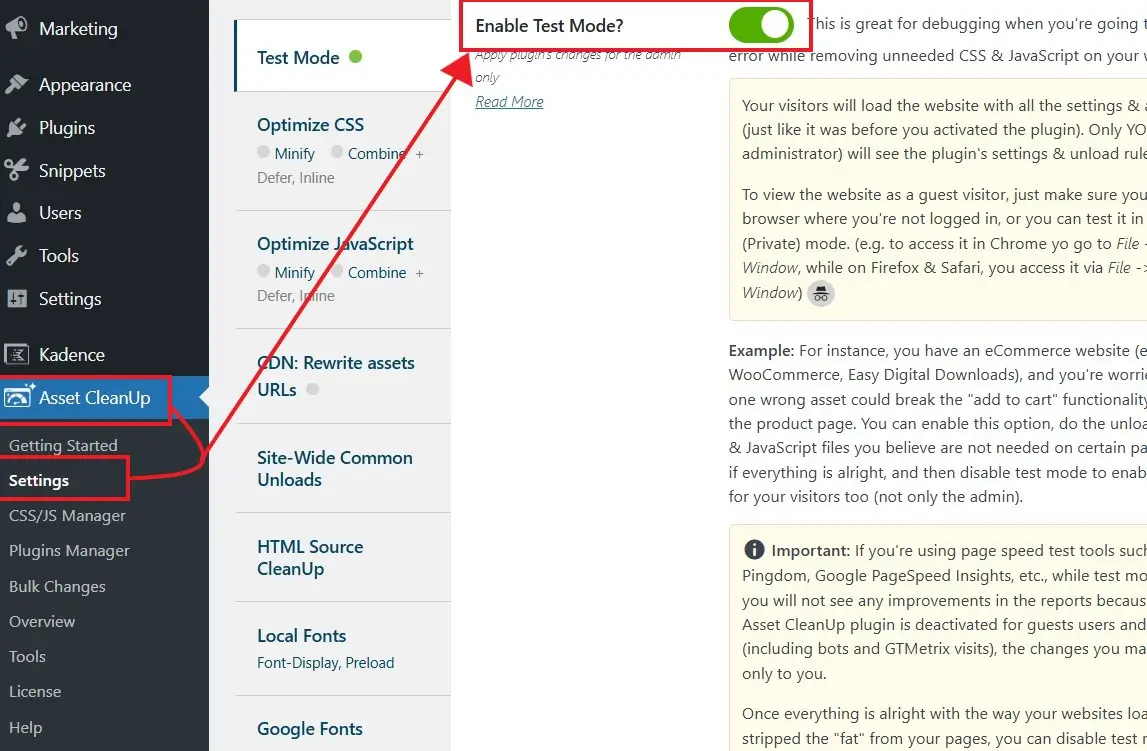
You can also enable ‘Minify CSS’ in the Optimize CSS tab(below the Test Mode tab) to minify CSS files and serve them from cache for visitors.
Now, go to Asset CleanUp → CSS/JS Manager. It will show you every file loaded on that page.
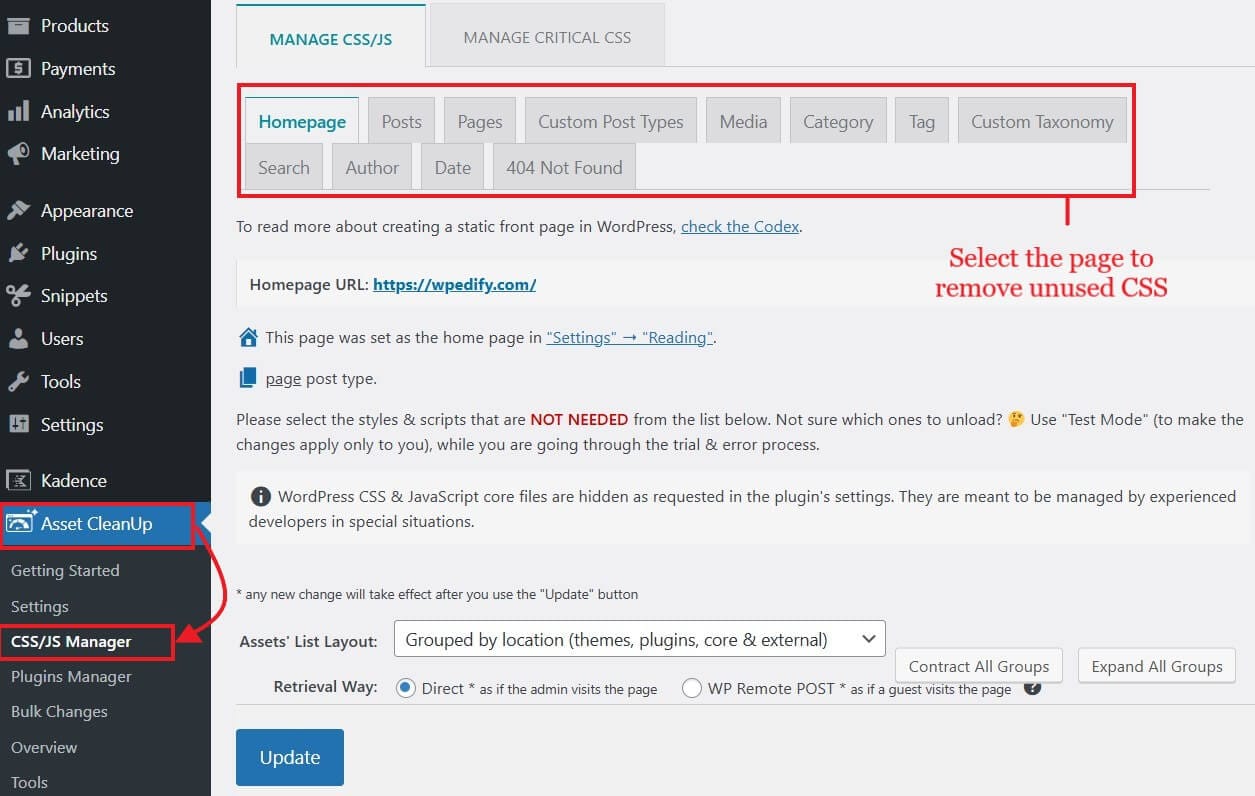
To remove unnecessary files, toggle the ‘Unload on this page’ option.
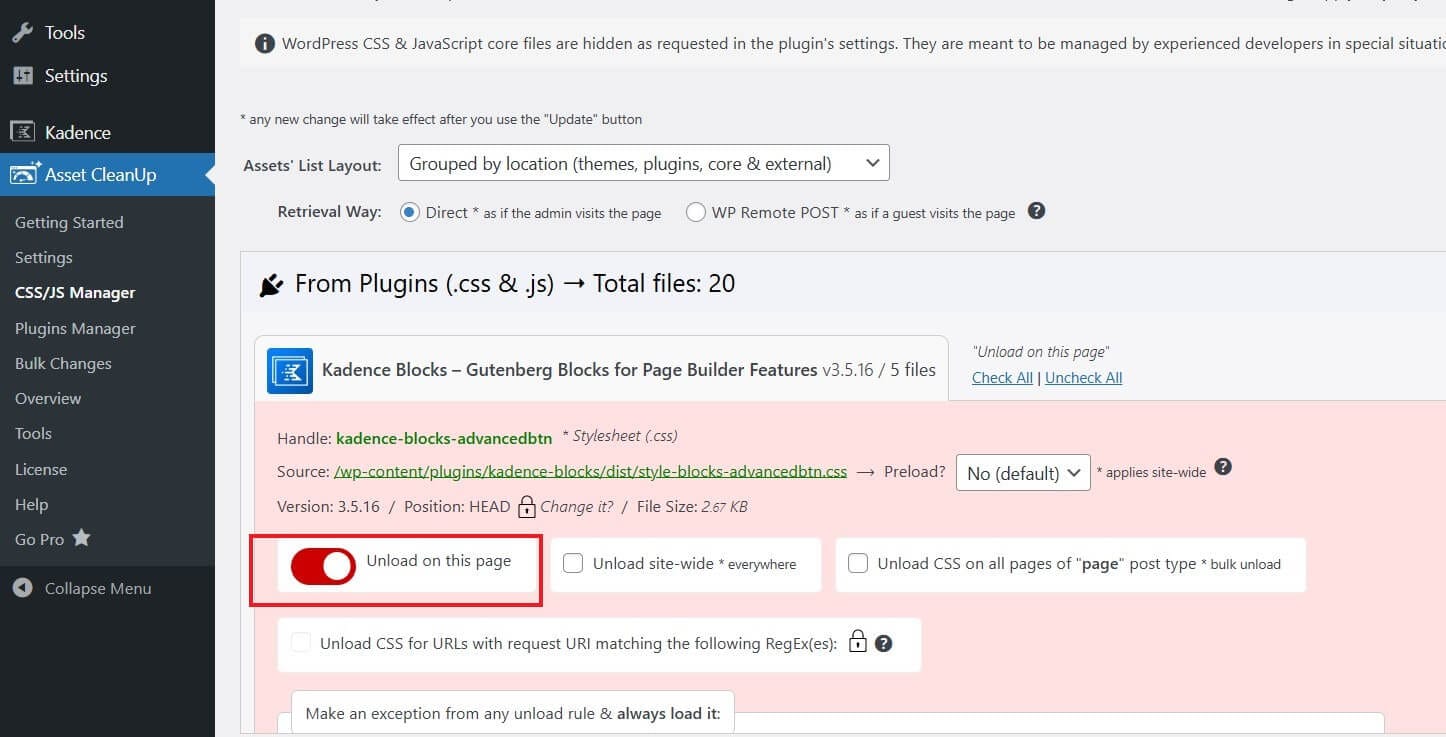
To select a page, open the ‘Pages’ tab and search for it. The same applies to ‘Posts’.
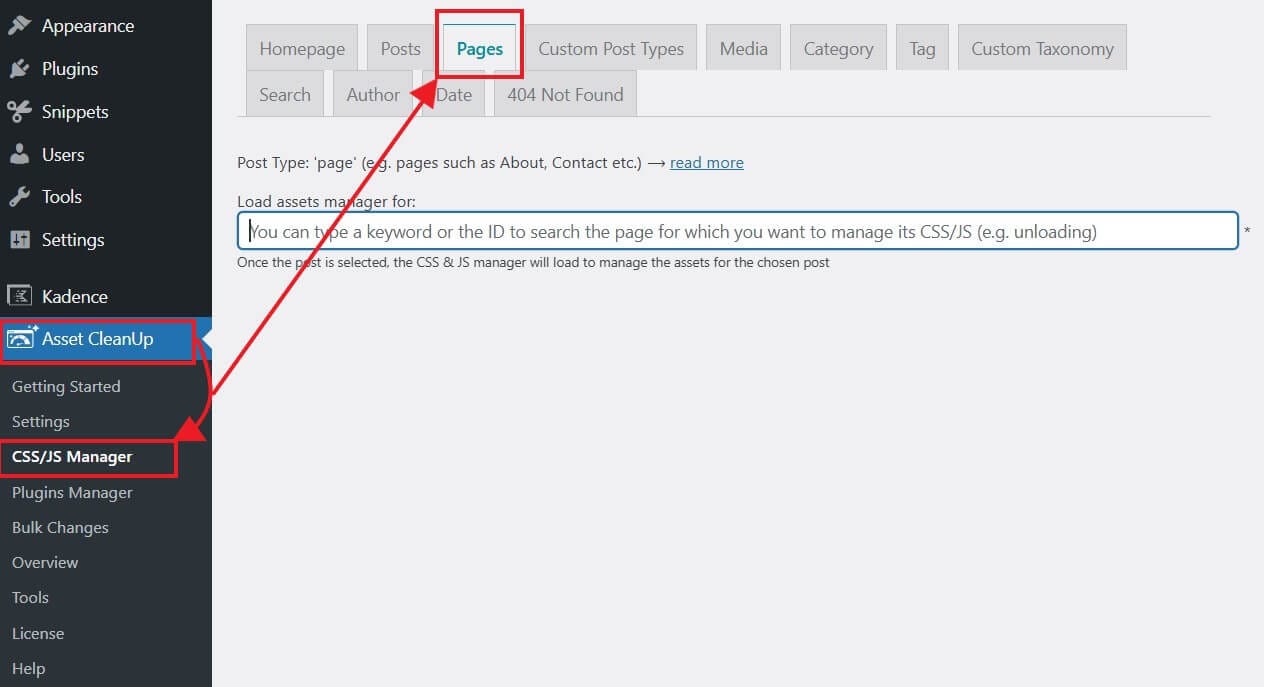
Don’t forget to click on the ‘Update’ button to save your changes.
Interestingly, when you open and edit any post, the Asset CleanUp tab will appear at the bottom of the post editor.
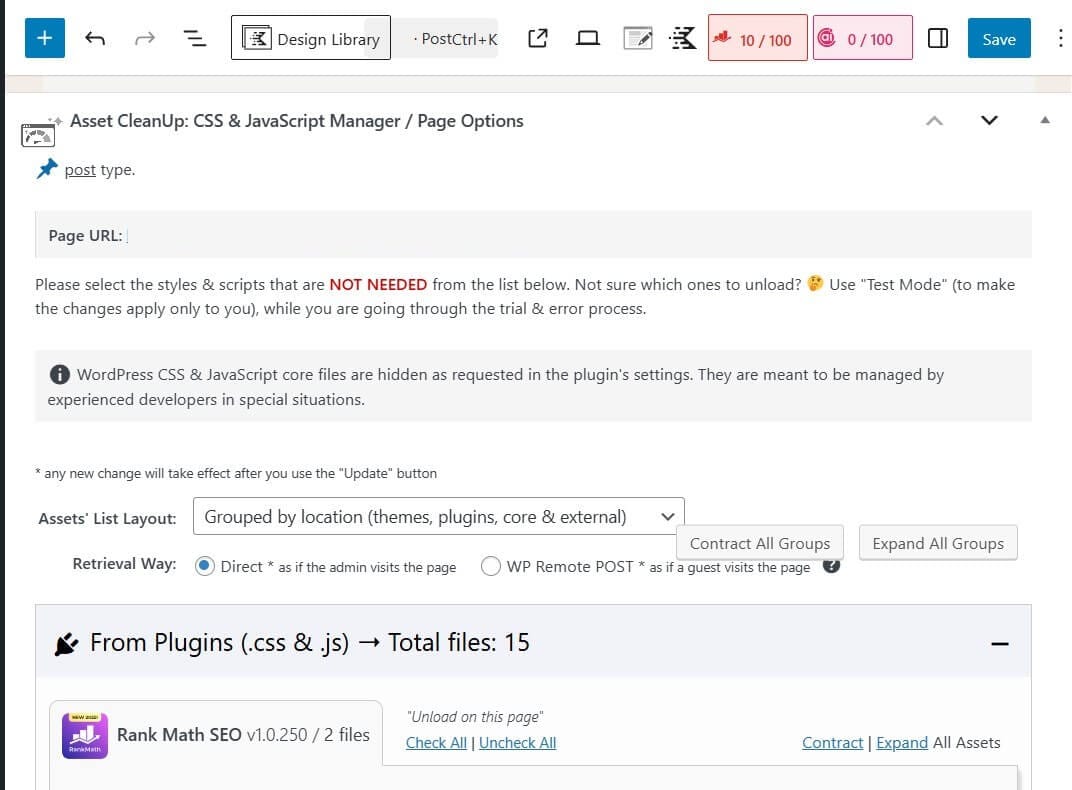
It mainly focuses on managing assets, so it’s not a full caching solution. Because of this, it’s often used with a dedicated cache plugin.
Conclusion
Getting rid of unused CSS in WordPress isn’t just some “techy” chore—it’s one of the easiest ways to make your site load faster, look smoother, and keep both visitors and Google happy.
Once you understand why all that extra CSS piles up, tools like LiteSpeed Cache or Asset CleanUp can help you clean things up without breaking anything important.
A faster site means happier visitors, lower bounce rates, and yes—better chances of ranking higher in search results.
We hope we covered everyting you need to remove unused CSS from WordPress. If you’ve tried a different method or have your own tricks, drop them in the comments. We’d love to hear from you!
Give these tips a try, see how much faster your site becomes, and share this post with a friend who’s battling slow load times because ‘Sharing is Caring’.

